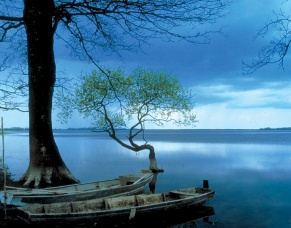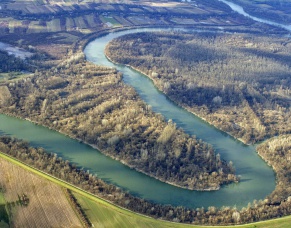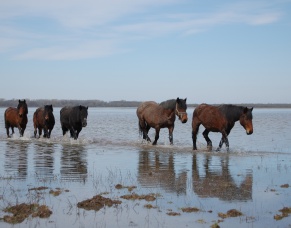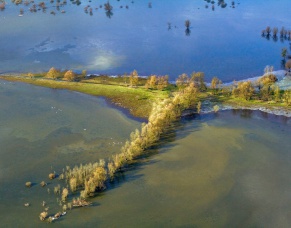Lonjsko Polje Nature Park
The Sava River – The Ruler of Lonjsko Polje
One of the right tributaries of the Danube is the Sava River, which is the third biggest tributary in terms of length, but in terms of flow the greatest (1564 m3/s).The length of the Sava, from its source in the mountains of western Slovenia to its mouth into the Danube, is 944 km. It flows through four countries: Slovenia, Croatia, Bosnia-Herzegovina and Serbia. The area of the Sava River basin is 97,713 km2 and of great significance for the Danube basin, because of the exceptional biological and landscape diversity. The Sava is a unique example of a river with a floodplain that is still untouched, that mitigates the flooding, and supports biological diversity.
Because of the exceptional arrangement of the Sava River system, which comprehends three different climate regions, flood may occur at any time of the year. This volatility makes Lonjsko Polje an outstanding example of ecological processes caused by extreme and unpredictable oscillations of flood dynamics occurring in the central course of a Sava River. The use of the natural retention areas in the low-lying part of the basin is the key and only possible solution for the protection of the area from high waters.With 205,000 hectares ofretention areas in the flood defence system, those natural floodplains are also important in the process for the purging of the waters from the streams, and have an important role in the renewal of reserves of groundwater. In an international context the area of Central Posavina with its flood defence system is a positive example of the protection of areas liable to inundation.
From being a rapid mountain stream, the Sava, as it enters the Pannonian Lowlands, becomes a river of the plains.For many a long year the river and its dynamics have changed the appearance of banks and landscape, created the raised banks or ridges, oxbows and inundated lowlands that form the image of the typical floodplain landscape of the lowland rivers.In Lonjsko Polje, people have learned for years to live with the river, and by adjusting to the floods, have created a harmony of natural and cultural landscape elements. They have acknowledged the water as ruler, relying on the wise old saying that reveals the secret of successful life in an area subjected to flooding – Live with the water, not against it.


_291x228.JPG)


